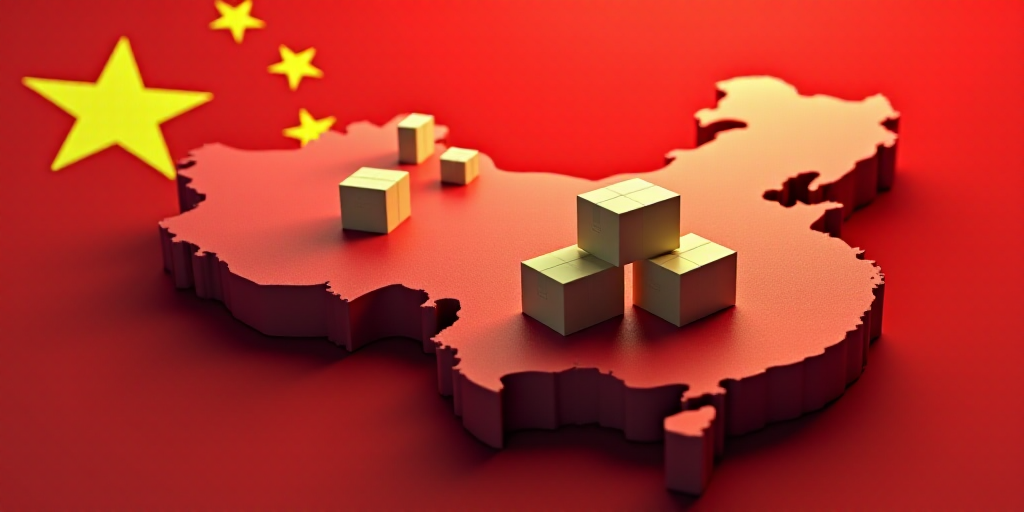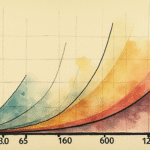Introduction
China’s manufacturing sector has come a long way, surpassing many indicators of strength. Two decades ago, foreign-invested companies drove Chinese manufacturing exports; today, most of these firms are leaving China as their market share dwindles to domestic competitors. However, these dominant Chinese companies are not just producing low-value goods from the past; they are global leaders in high-tech industries like semiconductors and electric vehicles, holding an absolute price advantage.
China’s Rise: A Comparison with Japan and South Korea
In the 1970s, Japan produced high-tech goods like appliances and cars that surpassed US alternatives. In the 1990s, South Korea emerged as a power in electronics and automotive sectors. The difference is that Japan’s GDP per capita in the 1970s and South Korea’s in the 1990s were around half of the US, while China’s nominal GDP per capita is less than 16% of the US today (13,300 USD compared to 85,800 USD).
How Did China Achieve Technological Prowess with Low GDP per Capita?
The obvious question is how a country with such a low GDP per capita managed to reach technological frontiers in numerous sectors. Another intriguing question is how China maintains such low prices for cutting-edge technologies it produces. A significant part of the answer lies in China’s massive scale.
Investing in Human Capital
A country with a vast population can offer high-quality education to its people, accumulating substantial human capital. Such a country learns more easily from advanced economies and develops its own innovative capacity at an earlier stage of development. Although China had limited trade with the West during Mao’s era, it had a significant contingent of elites who studied in Western universities before the People’s Republic was established. This group played a crucial role in advancing China’s scientific and technological research sector, helping industrialize the economy with Soviet technical assistance. More importantly, China successfully established a modern basic education system in the 1950s, making it free for all Chinese children despite extreme poverty. The country also restructured its higher education system.
The Soviet-Style Higher Education Model
While China maintained few exchanges with the West during the Mao era, it had a large group of elites who studied in Western universities before the People’s Republic was established. This group significantly contributed to advancing China’s scientific and technological research sector, helping industrialize the economy with Soviet technical assistance. More crucially, China successfully established a modern basic education system in the 1950s, making it free for all Chinese children despite extreme poverty. The country also restructured its higher education system.
Scaling Up Education and Industry
In the last 40 years, China has maintained this basic model and made it increasingly accessible. Since the Chinese government’s 1999 decision to expand university enrollment, the annual number of graduates has grown from one million in 1999 to twelve million today, with roughly half holding degrees in science, technology, engineering, or mathematics. Today, China has nearly five times more graduates in these areas than the US and seven times more engineers. This explains why Chinese consumers enjoy effective, affordable, and widely available after-sales services and maintenance for the products they buy, from electronics to electric vehicles.
China also recognized the value of learning from the West, sending over six million students to foreign universities in the last 40 years, most of whom returned to China after completing their studies. This significantly contributed to China’s manufacturing sector advancement, especially in the last 20 years.
Government Policies and Horizontal Competition
Education was only part of the equation. China’s 1979 decision to allow local companies to form joint ventures with foreign firms led to technological modernization across various sectors. More importantly, as China developed increasingly advanced manufacturing capabilities, it also expanded its supply chains and supporting infrastructure. Today, the Chinese manufacturing sector relies on a robust network of suppliers, innovators, manufacturers, and logistics providers.
The Chinese government has played a crucial role in creating and developing this ecosystem. However, contrary to the prevailing Western perception, this process is not primarily verticalist. China comprises 31 provinces, around 300 prefecture-level cities, and approximately 2,800 counties and cities. At every level, local governments compete to promote growth and industrial development. While the central government sets priorities, any policies introduced to support specific industries function practically as horizontal competition policies. This economic strategy—possible due to China’s massive scale—has been essential for the rapid development and ongoing competitiveness of China’s manufacturing industry.
About the Author
Zhang Jun, Dean of the School of Economics at Fudan University, is Director of the Chinese Economic Studies Center, a group of experts based in Shanghai.
Copyright: Project Syndicate, 1995 – 2025
www.project-syndicate.org






